BLOG - Page 43
Recently created mixtures:

Sea-Buckthorn Macerated oil
February 7, 2019

Home made air freshener
June 29, 2016

Homemade Dog-rose distillate
June 28, 2016

Homemade jasmine distillate
June 22, 2016

Moxibustion treatment with Moxa stick
May 30, 2016

Face and body gentle oil cleanser
May 26, 2016
BLOG / LATEST ADDITIONS!
Black Pine Essential Oil (Pinus Nigra) ☸ Essential oils ☸ Base / General
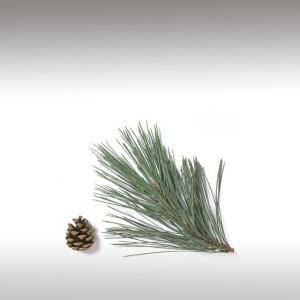

The European Black Pine Pinus nigra (generally called Black Pine in
Europe), is a variable species of pine, occurring across southern Europe
from Spain to the Crimea, and also in Asia Minor, Cyprus, and locally
in the Atlas Mountains of northwest Africa. It is found at elevations
ranging from sea level to 2,000 m, most commonly from 250¨C1,600 m.
Submitted by OperaDreamhouse (May 1, 2014)
Black Pine Essential Oil (Pinus Nigra) ☸ Essential oils ☸ Medicine / Health

 Pine essential oil is viewed as an analgesic, antibacterial, antibiotic, antifungal, antiseptic, and as an antiviral. Aromatherapists credit its use for inflammatory conditions and respiratory or circulatory ailments, and some infections due to its reported decongestant, deodorising, and cleansing properties.
Pine essential oil is viewed as an analgesic, antibacterial, antibiotic, antifungal, antiseptic, and as an antiviral. Aromatherapists credit its use for inflammatory conditions and respiratory or circulatory ailments, and some infections due to its reported decongestant, deodorising, and cleansing properties.Submitted by OperaDreamhouse (May 1, 2014)
Apricot Kernel Oil (Prunus Armeniaca) ☸ Base oils ☸ Base / General
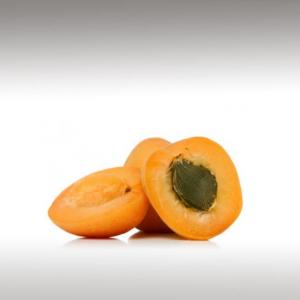

The Apricot, known formally as Prunus Armeniaca, is a small, yellow to orange, soft fruit with a single pit inside. At the core of the pit is the kernel, which can be pressed to yield Apricot Kernel oil. The plant is cultivated in different parts of the world such as Australia,Persia, Armenia, China, Iran and Japan. The plant is native to the continental climate region and can grow in the Mediterranean region.
The Apricot tree is cultivated throughout the Northern Hemisphere. Apricot Kernel oil has 30% unsaturated essential fatty acidcontent.
Apricot Kernel oil is cold-pressed from the dried seeds of the fruit of the Apricot tree. This natural oil is light-colored and fragrant, imparting a somewhat nutty aroma. Apricot Kernel oil is rich in fatty acids and Vitamins A, C and E. This makes the oil highly nutritious.
Kernels are sometimes used whole to make distilled liquors such as Amaretto.
The Apricot oil is similar to Almond oil and Peach oil, both of which are also extracted from the kernels of the respective fruit. Apricot Kernel oil is cold-pressed from the dried seeds of the fruit of the Apricot tree.
Chemical structure:
All of the Apricot Kernels contained between 40,23% and 53,19 % oil. In addition, the samples contained up to 70,83% oleic acid, 21,96% percent linoleic acid and smaller amounts of palmitic and stearic acids.
the chemical structure of Apricot Kernel oil makes it more susceptible to turning rancid from lipid peroxidation, the presence of natural antioxidants, such as Vitamins C and E, help to offset decomposition and extend shelf life. It is recommended that within three months after opening the bottle, the oil should be used.
The kernels have an oil content of 40-50%. Cool and dark place at a temperature of 7-25 C. At low temperature it tends to thicken, when heated the oil gets back to normal. In improper storage room, the oil starts to become rancid.
The Apricot tree is cultivated throughout the Northern Hemisphere. Apricot Kernel oil has 30% unsaturated essential fatty acidcontent.
Apricot Kernel oil is cold-pressed from the dried seeds of the fruit of the Apricot tree. This natural oil is light-colored and fragrant, imparting a somewhat nutty aroma. Apricot Kernel oil is rich in fatty acids and Vitamins A, C and E. This makes the oil highly nutritious.
Kernels are sometimes used whole to make distilled liquors such as Amaretto.
The Apricot oil is similar to Almond oil and Peach oil, both of which are also extracted from the kernels of the respective fruit. Apricot Kernel oil is cold-pressed from the dried seeds of the fruit of the Apricot tree.
Chemical structure:
All of the Apricot Kernels contained between 40,23% and 53,19 % oil. In addition, the samples contained up to 70,83% oleic acid, 21,96% percent linoleic acid and smaller amounts of palmitic and stearic acids.
the chemical structure of Apricot Kernel oil makes it more susceptible to turning rancid from lipid peroxidation, the presence of natural antioxidants, such as Vitamins C and E, help to offset decomposition and extend shelf life. It is recommended that within three months after opening the bottle, the oil should be used.
The kernels have an oil content of 40-50%. Cool and dark place at a temperature of 7-25 C. At low temperature it tends to thicken, when heated the oil gets back to normal. In improper storage room, the oil starts to become rancid.
Submitted by OperaDreamhouse (April 24, 2014)
Apricot Kernel Oil (Prunus Armeniaca) ☸ Base oils ☸ Food / Cooking


Apricot Kernel oil is encapsulated for use a dietary supplement because it is an excellent source of essential fatty acids and antioxidants. This oil is excellent to use for high-temperature frying and cooking.
Food grade Apricot Kernel oil can be used as a salad oil or drizzled on other foods. It is not usually used for cooking, because of the expense.
Food grade Apricot Kernel oil can be used as a salad oil or drizzled on other foods. It is not usually used for cooking, because of the expense.
Submitted by OperaDreamhouse (April 24, 2014)
Apricot Kernel Oil (Prunus Armeniaca) ☸ Base oils ☸ Medicine / Health


Apricot Kernel oil is also used in traditional Chinese and Tibetan medicine to treat inflammatory skin disorders, often in combination with other botanical materials.
The nourishing properties of apricot kernel seed oil have an anti-inflammatory effect and may soothe minor skin conditions such as eczema.
The oil increases the flow of energy, balances the nervous system, and aids in physical harmony.
In massage procese Apricot Kernel oil reducing stress, pain and inflammation and instilling an overall sense of well-being. Apricot kernel oil is also very mild and non-irritating, making it suitable for children and infant massage.
The British used the oil for stomach ulcers. The oil is used to treat respiratory problems such as bronchitis. Even constipation can be treated with the oil.
Apricot Kernel oil is used in the treatment ofear aches. It is very good for burns, sunburns, cuts, wounds, scars, muscular pain, rashes, skin irritation.
The nourishing properties of apricot kernel seed oil have an anti-inflammatory effect and may soothe minor skin conditions such as eczema.
The oil increases the flow of energy, balances the nervous system, and aids in physical harmony.
In massage procese Apricot Kernel oil reducing stress, pain and inflammation and instilling an overall sense of well-being. Apricot kernel oil is also very mild and non-irritating, making it suitable for children and infant massage.
The British used the oil for stomach ulcers. The oil is used to treat respiratory problems such as bronchitis. Even constipation can be treated with the oil.
Apricot Kernel oil is used in the treatment ofear aches. It is very good for burns, sunburns, cuts, wounds, scars, muscular pain, rashes, skin irritation.
Stimulates hair growth and skin rejuvenation.
Submitted by OperaDreamhouse (April 24, 2014)
Avocado Oil (Persea Gratissima) ☸ Base oils ☸ Base / General
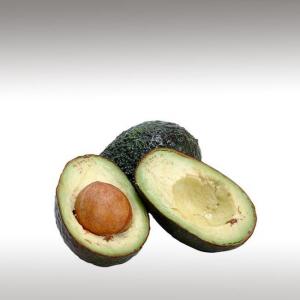

The tree is a member of the Laurel (Lauraceae) family and there are approximately 500 varieties, which produce fruits ranging from small and egg-like to heavy, pear-shaped fruits. The Aztecs believed the Avocado had aphrodisiacqualities because of its shape. The name Avocado is derived from the Mexican name "Ahuacatl", a shortening ofthe Aztec name "Ahuacacuahatl".
Cold-pressing the flesh of the Avocado makes Avocado oil. It takes ten fruits to produce one teaspoon of the rich and thick oil. This oil absorbs easily and it is full of beneficialfatty acids and vitamins.
They are the fruit of a subtropical tree, native to Mexico and South America.
Avocado oil is one of few edible oils not derived from seeds. It is pressed from the fleshy pulp surrounding the Avocado pit.
Persea Gratissima (Avocado) oil is obtained by pressing dehydrated, sliced avocados of Persea Gratissima. Following pre-drying of the Avocado flesh to remove as much water as possible (65% water in Avocado flesh), Avocado oil for cosmetics is traditionally extracted with solvents at elevated temperatures.
Cold-pressed "Hass" Avocado oil has been described as having an Avocado flavor, with grassy and butter/mushroom-like flavors.
Chemical structure:
Avocado contains more than 20% essential unsaturated fatty acids, Vitamins A, B, C and E, proteins, lecithin and potassium (the latter of which is sometimes called the "Youth mineral"). Avocado oil functions well as a carrier oil for other flavors. It is high in monounsaturated fats and Vitamin E. Avocado oil also enhances the absorption of carotenoids and other nutrients.
Avocado oil is rich in triglycerides of oleic acid and contains lesser amounts of palmitic, linoleic, and palmitoleic acids. The amount of fat in Avocados varies depending on the area in which it is grown and the degree of ripeness of the fruit.
Avocado oil is naturally low acidic, helping to increase smoke point. An extra virgin Avocado oil, characterized by a deep emerald green color (from Avocado's chlorophyll content) can safely be heated to degree of 249 °C.
Cold-pressing the flesh of the Avocado makes Avocado oil. It takes ten fruits to produce one teaspoon of the rich and thick oil. This oil absorbs easily and it is full of beneficialfatty acids and vitamins.
They are the fruit of a subtropical tree, native to Mexico and South America.
Avocado oil is one of few edible oils not derived from seeds. It is pressed from the fleshy pulp surrounding the Avocado pit.
Persea Gratissima (Avocado) oil is obtained by pressing dehydrated, sliced avocados of Persea Gratissima. Following pre-drying of the Avocado flesh to remove as much water as possible (65% water in Avocado flesh), Avocado oil for cosmetics is traditionally extracted with solvents at elevated temperatures.
Cold-pressed "Hass" Avocado oil has been described as having an Avocado flavor, with grassy and butter/mushroom-like flavors.
Chemical structure:
Avocado contains more than 20% essential unsaturated fatty acids, Vitamins A, B, C and E, proteins, lecithin and potassium (the latter of which is sometimes called the "Youth mineral"). Avocado oil functions well as a carrier oil for other flavors. It is high in monounsaturated fats and Vitamin E. Avocado oil also enhances the absorption of carotenoids and other nutrients.
Avocado oil is rich in triglycerides of oleic acid and contains lesser amounts of palmitic, linoleic, and palmitoleic acids. The amount of fat in Avocados varies depending on the area in which it is grown and the degree of ripeness of the fruit.
Avocado oil is naturally low acidic, helping to increase smoke point. An extra virgin Avocado oil, characterized by a deep emerald green color (from Avocado's chlorophyll content) can safely be heated to degree of 249 °C.
Submitted by OperaDreamhouse (April 24, 2014)
Avocado Oil (Persea Gratissima) ☸ Base oils ☸ Beauty / Cosmetics


Suitable for dry and mature skin types.
Avocado oil was originally, and still is, extracted for cosmetic use because of its very high skin penetration and rapid absorption. Oil is used in many different products, including bath products, eye makeup, lipstick, makeup bases, cleansing cream, hair conditioners, sunscreen lotions, as well skin and hair care products.
The most beneficial qualities of Avocado Oil for skin rejuvenation include increased levels of collagen production deriving from the fact that it can penetrate the skin more deeply, relief of damaged skin caused by sun exposure, treatment ofdry skin for deep moisturization. It is also recommended for fine lines and wrinkles and is said to help protect skin from the effects of ultraviolet rays.
It is also used for lubrication and in cosmetics, where it is valued for its supposed regenerative properties. Avocado Oil used regularly can result in wrinkle-free, youthful, elastic skin that gives a soothing effect to dry skin.
Avocado oil is reputed to be beneficial in reducing age spotsand the appearance of scars because it has a high content of unsaponifiables (sterolins) that soften and moisturize skin’s upper layer.
Avocado oil functions well as a carrier oil for other flavors. It is high in monounsaturated fatsand Vitamin E. Avocado oil also enhances the absorption of carotenoids and other nutrients.
Unrulyor dry hair will benefit from Avocado: rich and nourishing, it helps to add strength and shine and conditions the hair, too. Avocado oil can use ass hair conditioner to add weight, and to restore shine.
Avocado oil was originally, and still is, extracted for cosmetic use because of its very high skin penetration and rapid absorption. Oil is used in many different products, including bath products, eye makeup, lipstick, makeup bases, cleansing cream, hair conditioners, sunscreen lotions, as well skin and hair care products.
The most beneficial qualities of Avocado Oil for skin rejuvenation include increased levels of collagen production deriving from the fact that it can penetrate the skin more deeply, relief of damaged skin caused by sun exposure, treatment ofdry skin for deep moisturization. It is also recommended for fine lines and wrinkles and is said to help protect skin from the effects of ultraviolet rays.
It is also used for lubrication and in cosmetics, where it is valued for its supposed regenerative properties. Avocado Oil used regularly can result in wrinkle-free, youthful, elastic skin that gives a soothing effect to dry skin.
Avocado oil is reputed to be beneficial in reducing age spotsand the appearance of scars because it has a high content of unsaponifiables (sterolins) that soften and moisturize skin’s upper layer.
Avocado oil functions well as a carrier oil for other flavors. It is high in monounsaturated fatsand Vitamin E. Avocado oil also enhances the absorption of carotenoids and other nutrients.
Unrulyor dry hair will benefit from Avocado: rich and nourishing, it helps to add strength and shine and conditions the hair, too. Avocado oil can use ass hair conditioner to add weight, and to restore shine.
Submitted by OperaDreamhouse (April 24, 2014)
Sesame Oil (Sesamum Indicum) ☸ Base oils ☸ Base / General
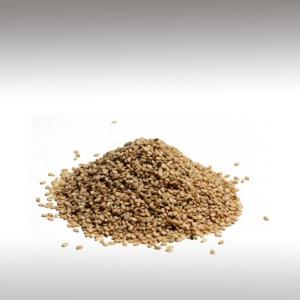

Sesamum Indicum (Sesame) Seed oil is a pale yellow oil made from Sesame seeds. It is one of the oldest oil crops and is widely cultivated in Asia and Africa.
It was a highly prized oil crop of Babylon and Assyria at least 4000 years ago.The Sanskrit word for oil,"Taila" is derived from the Sanskrit word for "Sesame Tila".
Sesame is growing intropical, subtropical, and southern temperate areas of the world, particularly in India, China, Africa and South Africa. In India about 80% seeds of total production being use for oil extraction.
The plant is erect, simple or branched annual, 60 - 180 cm. in height. The petals of the flower is tubular, approximately 3 cm long, with an applicate margin slightly bilabiate. The fruit is a capsule, erect and oblong. The capsule contains numerous small ovate seeds.
Sesamum Indicum oil-rich seeds, which come in a variety of colors, from cream-white to charcoal-black. Seeds grow in pods, which burst open at maturity, giving rise to the phrase "Open sesame"
Sesame seed is one of the oldest oilseed crops known, domesticated well over 3000 years ago. Charred remains of sesame at Harappa excavations (3600 - 1750 B.C.) indicate that Sesame was in cultivation during the Indus Valley Civilization. Sesame Seeds were introduced to the US by African slaves.
Today, India and China are the world's largest producers of sesame, followed by Burma, Sudan, Mexico, Nigeria, Venezuela, Turkey, Uganda and Ethiopia.
Chemical structure:
Sesame Seed has higher oil content( around 50%) than most of the known oil seeds. The seed has 40 - 60% of oil with almost equal levels of oleic (range 33 - 50%, typically 41%) and linoleic acids (range 33 - 50%, typically 43%) and some palmitic acid (range 7 - 12%, typically 9%) and stearic acid (range 3 - 6%, typically 6%).
Sesame seed oil, like Sunflower Seed oil, is rich in omega - 6 fatty acids, but lacks omega- 3 fatty acids. Sesame seed is also rich in protein, at 25% by weight.
Sesame oil is one of the most stable vegetable oils, with long shelf life, because of the high level of natural antioxidants(sesamin, sesamolin, and sesamol).
Other beneficial nutrients in Sesame oil include phosphorus, copper, calcium, zinc and magnesium.
It was a highly prized oil crop of Babylon and Assyria at least 4000 years ago.The Sanskrit word for oil,"Taila" is derived from the Sanskrit word for "Sesame Tila".
Sesame is growing intropical, subtropical, and southern temperate areas of the world, particularly in India, China, Africa and South Africa. In India about 80% seeds of total production being use for oil extraction.
The plant is erect, simple or branched annual, 60 - 180 cm. in height. The petals of the flower is tubular, approximately 3 cm long, with an applicate margin slightly bilabiate. The fruit is a capsule, erect and oblong. The capsule contains numerous small ovate seeds.
Sesamum Indicum oil-rich seeds, which come in a variety of colors, from cream-white to charcoal-black. Seeds grow in pods, which burst open at maturity, giving rise to the phrase "Open sesame"
Sesame seed is one of the oldest oilseed crops known, domesticated well over 3000 years ago. Charred remains of sesame at Harappa excavations (3600 - 1750 B.C.) indicate that Sesame was in cultivation during the Indus Valley Civilization. Sesame Seeds were introduced to the US by African slaves.
Today, India and China are the world's largest producers of sesame, followed by Burma, Sudan, Mexico, Nigeria, Venezuela, Turkey, Uganda and Ethiopia.
Chemical structure:
Sesame Seed has higher oil content( around 50%) than most of the known oil seeds. The seed has 40 - 60% of oil with almost equal levels of oleic (range 33 - 50%, typically 41%) and linoleic acids (range 33 - 50%, typically 43%) and some palmitic acid (range 7 - 12%, typically 9%) and stearic acid (range 3 - 6%, typically 6%).
Sesame seed oil, like Sunflower Seed oil, is rich in omega - 6 fatty acids, but lacks omega- 3 fatty acids. Sesame seed is also rich in protein, at 25% by weight.
Sesame oil is one of the most stable vegetable oils, with long shelf life, because of the high level of natural antioxidants(sesamin, sesamolin, and sesamol).
Other beneficial nutrients in Sesame oil include phosphorus, copper, calcium, zinc and magnesium.
Submitted by OperaDreamhouse (April 24, 2014)
Distillation Apparatus ☸ Tools ☸ Base / General
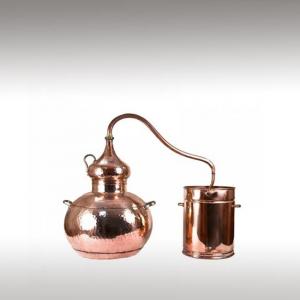
 Herbal Distillates are aqueous products of distillation. They are
colloidal suspensions (Hydrosol) of essential oils as well as water
soluble components obtained by steam distillation or hydro distillation
from plants/herbs.
Herbal Distillates are aqueous products of distillation. They are
colloidal suspensions (Hydrosol) of essential oils as well as water
soluble components obtained by steam distillation or hydro distillation
from plants/herbs. These Herbal Distillates have uses as flavorings, medicine and in skin care.
Herbal Distillates go by many other names including Floral Water, Hydrosol, Hydrolate, Herbal Water and Essential Water.
Submitted by OperaDreamhouse (April 5, 2014)
Essential Oil Diffuser ☸ Tools ☸ Base / General
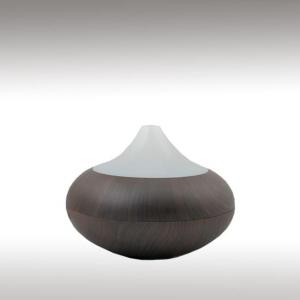
 Diffusion is the process of dispersing essential oils so that their
aroma fills a room or an area with the natural fragrance. From the
simple to the elaborate, many different methods exist for diffusing
essential oils into a room.
Diffusion is the process of dispersing essential oils so that their
aroma fills a room or an area with the natural fragrance. From the
simple to the elaborate, many different methods exist for diffusing
essential oils into a room.
Submitted by OperaDreamhouse (April 5, 2014)
Mini Hand Mixer ☸ Tools ☸ Base / General

 Super compact, Mini Hand Mixer is ideal for those small jobs making soap, lotion, conditioner.
Super compact, Mini Hand Mixer is ideal for those small jobs making soap, lotion, conditioner.
Submitted by OperaDreamhouse (April 5, 2014)
Incense Burner (Censers) ☸ Tools ☸ Base / General
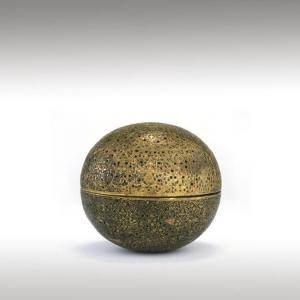

Censers are any type of vessels made for burning Incense.
These vessels vary greatly in size, form, and material of construction.
They may consist of simple earthenware bowls or fire pots to intricately
carved silver or gold vessels, small table top objects a few
centimetres tall to as many as several metres high. In many cultures, burning Incense has spiritual and religious connotations, and this influences the design and decoration of the censer.
Submitted by OperaDreamhouse (April 5, 2014)
Macadamia Oil (Macadamia Integrifolia) ☸ Base oils ☸ Base / General
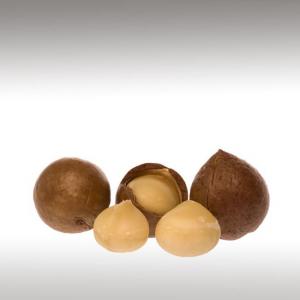

Macadamia is the genus belonging to the family Proteaceae. There are nine species of Macadamia. The only edible species are Integrifolia and Tetrapylla. The other species are poisonous and/or inedible.
Macadamia Integrifolia is a large, spreading, evergreen tree attaining a height of 18 m and a crown of 15 m. Fruit a globose follicle, 2,5 - 4 cm in diameter. Ericarp fibrous, about 3 mm thick. Seed (nut) usually 1, globular, with a smooth, hard, thick (2 - 5 mm testa enclosing the edible kernel).
The nut’s shell is very hard. Cracking it requires a blunt instrument such as a hammer or rock. The nuts are often fed to Hyacinth Macaws in captivity. These large birds are one of the few animals, besides humans, able to crack and shell the nut.
Macadamia oil (or Macadamia Nut oil) is the non-volatile oil expressed from the nut meat of the Macadamia (Macadamia Integrifolia) tree, a native Australian nut.
Macadamia oil is sometimes used in food as a frying or salad oil, and in cosmetic formulations as an emollient or fragrance fixative.
Macadamia Nut oil (Macadamia Integrifolia) is highly stable, to the extent that when used in formulations there is little need for additional anti-oxidants. This is a good choice to improve the anti-oxidant profile of more fragile oils, to prevent oxidation.
The Macadamia tree is native to the Queensland region of Australia, where it is also known as "Bushnut". However, Australians failed to see the commercial potential of this delicious and healthy nut. In 1881 it was brought to Hawaii, where it became very popular and Hawaii soon became the worlds leading producer of this nut.
The aborigines of eastern Australia ate this native nut that grew in the rainforests, thousands of years before European settlers arrived there. The macadamia Integrifolia nut was called Gyndl or Jindilli. In New South Wales the Macadamia Tetraphylla is traditionally known as Boombera.
Macadamia can be easily identified with its golden color. it exhibits a mild nutty sort of fragrance along with sweet undertones.
Macadamia oil is extracted through expeller pressed/unrefined process. In the process are pressed to extract define oil.
Chemical structure:
Macadamia oil containsapproximately 60% oleic acid, 19% palmitoleic acid, 1 - 3% linoleic acid and 1 - 2% α-linolenic acid. Some varieties contain roughly equalomega - 6and omega - 3.
Although Macadamia is cultivated in many different parts of the world, the oil's fatty acid profile is not greatly influenced by environmental factors. The oil displays chemical properties typical of a vegetable triglyceride oil. It is also very stable due to its low polyunsaturated fat content.
Macadamia is the richest oil-yielding nut known. The kernel contains more than 75% oil, suitable for human consumption.
Palmitoleic acid is very close to human sebum, in chemical profile. The absolute best, plant alternative, to animal based oils, this is the oil of choice to replace the activity of Mink oil, and even Shark Liver oil.
Macadamia Integrifolia oil shelf life is 10 - 12 months.
Macadamia nuts are toxic to dogs. Toxicosis may result upon ingestion causing weakness with the inability to stand within 12 hours of this ingestion. Recovery is seen within 48 hours.
Macadamia Integrifolia is a large, spreading, evergreen tree attaining a height of 18 m and a crown of 15 m. Fruit a globose follicle, 2,5 - 4 cm in diameter. Ericarp fibrous, about 3 mm thick. Seed (nut) usually 1, globular, with a smooth, hard, thick (2 - 5 mm testa enclosing the edible kernel).
The nut’s shell is very hard. Cracking it requires a blunt instrument such as a hammer or rock. The nuts are often fed to Hyacinth Macaws in captivity. These large birds are one of the few animals, besides humans, able to crack and shell the nut.
Macadamia oil (or Macadamia Nut oil) is the non-volatile oil expressed from the nut meat of the Macadamia (Macadamia Integrifolia) tree, a native Australian nut.
Macadamia oil is sometimes used in food as a frying or salad oil, and in cosmetic formulations as an emollient or fragrance fixative.
Macadamia Nut oil (Macadamia Integrifolia) is highly stable, to the extent that when used in formulations there is little need for additional anti-oxidants. This is a good choice to improve the anti-oxidant profile of more fragile oils, to prevent oxidation.
The Macadamia tree is native to the Queensland region of Australia, where it is also known as "Bushnut". However, Australians failed to see the commercial potential of this delicious and healthy nut. In 1881 it was brought to Hawaii, where it became very popular and Hawaii soon became the worlds leading producer of this nut.
The aborigines of eastern Australia ate this native nut that grew in the rainforests, thousands of years before European settlers arrived there. The macadamia Integrifolia nut was called Gyndl or Jindilli. In New South Wales the Macadamia Tetraphylla is traditionally known as Boombera.
Macadamia can be easily identified with its golden color. it exhibits a mild nutty sort of fragrance along with sweet undertones.
Macadamia oil is extracted through expeller pressed/unrefined process. In the process are pressed to extract define oil.
Chemical structure:
Macadamia oil containsapproximately 60% oleic acid, 19% palmitoleic acid, 1 - 3% linoleic acid and 1 - 2% α-linolenic acid. Some varieties contain roughly equalomega - 6and omega - 3.
Although Macadamia is cultivated in many different parts of the world, the oil's fatty acid profile is not greatly influenced by environmental factors. The oil displays chemical properties typical of a vegetable triglyceride oil. It is also very stable due to its low polyunsaturated fat content.
Macadamia is the richest oil-yielding nut known. The kernel contains more than 75% oil, suitable for human consumption.
Palmitoleic acid is very close to human sebum, in chemical profile. The absolute best, plant alternative, to animal based oils, this is the oil of choice to replace the activity of Mink oil, and even Shark Liver oil.
Macadamia Integrifolia oil shelf life is 10 - 12 months.
Macadamia nuts are toxic to dogs. Toxicosis may result upon ingestion causing weakness with the inability to stand within 12 hours of this ingestion. Recovery is seen within 48 hours.
Submitted by OperaDreamhouse (March 31, 2014)
Hazelnut Oil (Corylus Avellana) ☸ Base oils ☸ Base / General
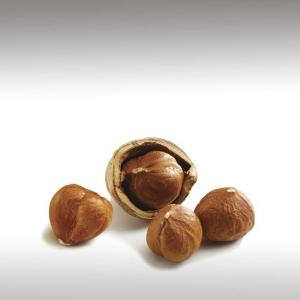

Corylus Avellana, the common Hazel, is a species of Hazel native to Europe and western Asia, from the British Isles south to Iberia, Greece, Turkey and Cyprus, north to central Scandinavia, and east to the central Ural Mountains, the Caucasus, and northwestern Iran.
Hazelnut (Corylus Avellana) is a popular tree nut worldwide, mainly distributed along the coasts of the Black Sea region of Turkey, southern Europe (Italy, Spain, Portugal, and France), and in some areas of the US (Oregon and Washington). Turkey is the world’s largest producer of Hazelnuts.
It is typically a shrub reaching 3 - 8 m tall, but can reach 15 m. The name "Hazelnut" applies to the nuts of any of the species of the genus Corylus. This Hazelnut or Cobnut, the kernel of the seed, is edible and used raw or roasted, or ground into a paste.
The Hazelnut oil is also known as the Cob nut oil or Filbert nut oil.
The Hazelnut oil is fine textured and one of the highly unsaturated vegetable oils. This nut oil is clear with slight yellow tint. It has a faintly nutty aroma, is highly penetrative and is fine textured and is one of the most highly unsaturated vegetable oils. The oil should not be exposed directly to sunlight.
Chemical structure:
Hazelnut oil contains 66-85% oleic acid, 7 - 25% linoleic acid, 4 - 9% palmitic acid and 1 - 6% stearic acid. The Hazel nut oil has some important fatty acids such as oleic, palmitic, stearic, linoleic acids. Glutamic acid was the main amino acid recovered both in un-roasted and roasted flours.
This Hazelnut oil, organic virgin cold-pressed, vegetable oil is close to the organic Sweet Almond oil but has a higher diffusion and penetration capacity. This oil have Vitamins A, B, D and minerals. Hazelnut oil is a warm-pressed oil, high in Vitamin E.
Shelf life: (evaluated up to 6 months) showed that these products are quite stable if stored at room temperature (25°C) in the dark.
Hazelnut (Corylus Avellana) is a popular tree nut worldwide, mainly distributed along the coasts of the Black Sea region of Turkey, southern Europe (Italy, Spain, Portugal, and France), and in some areas of the US (Oregon and Washington). Turkey is the world’s largest producer of Hazelnuts.
It is typically a shrub reaching 3 - 8 m tall, but can reach 15 m. The name "Hazelnut" applies to the nuts of any of the species of the genus Corylus. This Hazelnut or Cobnut, the kernel of the seed, is edible and used raw or roasted, or ground into a paste.
The Hazelnut oil is also known as the Cob nut oil or Filbert nut oil.
The Hazelnut oil is fine textured and one of the highly unsaturated vegetable oils. This nut oil is clear with slight yellow tint. It has a faintly nutty aroma, is highly penetrative and is fine textured and is one of the most highly unsaturated vegetable oils. The oil should not be exposed directly to sunlight.
Chemical structure:
Hazelnut oil contains 66-85% oleic acid, 7 - 25% linoleic acid, 4 - 9% palmitic acid and 1 - 6% stearic acid. The Hazel nut oil has some important fatty acids such as oleic, palmitic, stearic, linoleic acids. Glutamic acid was the main amino acid recovered both in un-roasted and roasted flours.
This Hazelnut oil, organic virgin cold-pressed, vegetable oil is close to the organic Sweet Almond oil but has a higher diffusion and penetration capacity. This oil have Vitamins A, B, D and minerals. Hazelnut oil is a warm-pressed oil, high in Vitamin E.
Shelf life: (evaluated up to 6 months) showed that these products are quite stable if stored at room temperature (25°C) in the dark.
Submitted by OperaDreamhouse (March 31, 2014)
Hazelnut Oil (Corylus Avellana) ☸ Base oils ☸ Beauty / Cosmetics


Suitable for dry, normal, mature, oily, sensitive skin types.
Hazelnut oil is a very popular, all purpose carrier oil. It is used by manufacturers (particularly as a conditioning agent in hair care products), aromatherapists, and massage therapists.
Hazelnut oil is rich in vitamins, minerals and proteins. It is a lovely light oil suitable for skincare and massage. Its astringent properties make it a good choice for young or oily skin types but it is also good for drier skins when blended with richer oils.
It makes the skin soft and is very gentle so can be used with sensitive skins as long as there are no nut allergies. The high oleic acid level of Hazelnut oil gives it remarkable soothing properties and it is also known to regulate sebum secretion.
Hazelnut oil has good astringent qualities (and is said to help maintain the skin's firmness and elasticity), which makes it a superb carrier oil to use on oily and combination skin. It has cell regeneration properties and moisturizing and astringent properties. Hazelnut oil penetrates deep into the skin and is known to help tone and tighten the skin.
Hazelnut oil is heralded as an oil that helps to tone and tighten the skin while strengthening capillaries and assisting in cell regeneration. Tones and tightens skin, helps maintain firmness and elasticity. Helps to strengthen capillaries so might be useful against thread veins. encourages cell regeneration, stimulates circulation.
Hazelnut massage oil has great moisturizing qualities which makes it a good choice to include when mixing a massage oil or preparing a carrier oil blend. It blends well with other massage oils.
Hazelnut oil is a good carrier oil in aromatherapy applications, it has a slightly astringent action that is good for all skin types, but especially for those with oily body skin.
Hazelnut oil does have the ability to filter out some of the suns rays, and you will find it in many suncare, solar products.
Hazelnut oil may be used in bath products, eye makeup and skin and hair care products. It is also effective to restore the hair's tonicity and sanitize the scalp.
Hazelnut has a mild scent and is the perfect base oil for creams and skin preparations. Contains oleic acid and a small proportion of linoleic acid.
Hazelnut oil may be used in bath and eye makeup products.
Hazelnut oil is a very popular, all purpose carrier oil. It is used by manufacturers (particularly as a conditioning agent in hair care products), aromatherapists, and massage therapists.
Hazelnut oil is rich in vitamins, minerals and proteins. It is a lovely light oil suitable for skincare and massage. Its astringent properties make it a good choice for young or oily skin types but it is also good for drier skins when blended with richer oils.
It makes the skin soft and is very gentle so can be used with sensitive skins as long as there are no nut allergies. The high oleic acid level of Hazelnut oil gives it remarkable soothing properties and it is also known to regulate sebum secretion.
Hazelnut oil has good astringent qualities (and is said to help maintain the skin's firmness and elasticity), which makes it a superb carrier oil to use on oily and combination skin. It has cell regeneration properties and moisturizing and astringent properties. Hazelnut oil penetrates deep into the skin and is known to help tone and tighten the skin.
Hazelnut oil is heralded as an oil that helps to tone and tighten the skin while strengthening capillaries and assisting in cell regeneration. Tones and tightens skin, helps maintain firmness and elasticity. Helps to strengthen capillaries so might be useful against thread veins. encourages cell regeneration, stimulates circulation.
Hazelnut massage oil has great moisturizing qualities which makes it a good choice to include when mixing a massage oil or preparing a carrier oil blend. It blends well with other massage oils.
Hazelnut oil is a good carrier oil in aromatherapy applications, it has a slightly astringent action that is good for all skin types, but especially for those with oily body skin.
Hazelnut oil does have the ability to filter out some of the suns rays, and you will find it in many suncare, solar products.
Hazelnut oil may be used in bath products, eye makeup and skin and hair care products. It is also effective to restore the hair's tonicity and sanitize the scalp.
Hazelnut has a mild scent and is the perfect base oil for creams and skin preparations. Contains oleic acid and a small proportion of linoleic acid.
Hazelnut oil may be used in bath and eye makeup products.
Submitted by OperaDreamhouse (March 31, 2014)
Page 43 of 48

